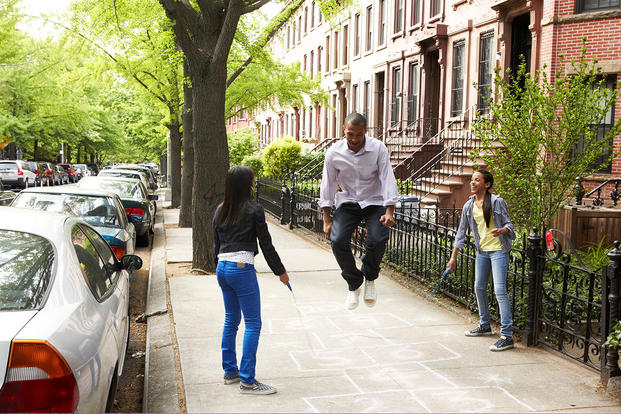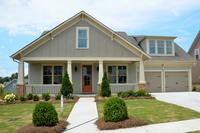Higher VA loan limits, a robust housing market, and competitive rates may make 2018 an exceptional year for Veteran homebuyers.
For the second consecutive year, U.S. Department of Veterans Affairs (VA) loan limits have increased. The VA announced that 2018 VA loan limits are up from a baseline of $424,100 to $453,100, effective Jan. 1, 2018. And the high-cost ceiling has increased from $636,150 to $679,650.
The increase is due to steadily rising home prices in most parts of the country. This, combined with competitive interest rates, may make 2018 a good time for Veteran homebuyers. Higher VA loan limits for 2018 may help qualified Veterans buy more expensive homes with no down payment.
What Are VA Loan Limits?
VA loan limits represent the maximum zero-down-payment mortgage amount that the VA will guarantee for lenders. Loans over the limit require a down payment. The limit for single-family properties in most areas will be $453,100. This is up from 2017’s $424,100, and will be the second baseline increase in two years. Some high-cost areas may have loan limits above the baseline. With another baseline increase, more Veterans may be able to use their VA loan without making a down payment.
How Is the Baseline Determined?
The baseline limit applies to most counties in the United States, except for those defined as high-cost areas. The baseline loan limit of $417,000 was established in the Housing and Economic Recovery Act (HERA) of 2008. Loan limits are intended to ebb and flow with home prices, but due to the housing crisis in 2008 (after the American housing bubble burst), limits had remained lower. Per HERA, the baseline loan limit could not increase until the average U.S. home price returned to its pre-crisis level.
In 2016, the increase happened. Home values rose throughout most of the U.S. The Federal Housing Finance Administration (FHFA) announced that the average home price in the third quarter (Q3) of 2016 was 1.7 percent above the value for the Q3 2007 (pre-crisis). As a result, the baseline loan limit for 2017 increased by the same percentage. Now again, home prices are up in all 50 states, from Q3 2016 to Q3 2017, by 6.5%, triggering another increase to 2018 VA loan limits.
High-Cost Ceiling Increased To $679,650
Certain areas will have limits that exceed the baseline of $453,100. The FHFA defines these high-cost housing areas as “areas in which 115% of their local median home value exceeds the baseline conforming loan limit.” In other words, these housing markets typically have significantly more expensive homes on average compared to the rest of the country. Limits in these areas are set at the median home value but can’t go above the 2018 high-cost ceiling of $679,650 – or 150% of the baseline $453,100.
Special provisions exist for Alaska, Hawaii, Guam, and the U.S. Virgin Islands. In these areas, limits can be higher than the ceiling of $679,650. For instance, the 2018 limit is $721,050 in Honolulu, which is unchanged from 2017.
Higher Loan Limits Reflect Rising Home Prices
Home prices have risen steadily since the housing crash in 2008, according to the FHFA. The house price index (HPI) shows changes on a monthly and quarterly basis.
Here are some of the significant findings from Q3 2017 HPI:
- Prices increased 6.5% nationally from Q3 2016 to Q3 2017.
- Fifty states and all 100 major metro areas saw home prices up from a year ago.
- Five top growth areas were: 1) District of Columbia 11.6%; 2) Washington 11.5%; 3) Hawaii 10.0%; 4) Arizona 10.0%; and 5) Nevada 9.6%.
- Metro area with the largest increase was Seattle-Bellevue-Everett, WA, up 14.6%.
- Metro area with weakest increases was Camden, NJ, up just 0.5%.
- Region with strongest growth was the Pacific, up 8.9% from last year.
- Region with weakest growth was the Mid-Atlantic, up 4.8% since Q3 2016.
Forecasting the Future
FHFA projects another rise in home prices for 2018, albeit at a slightly slower pace of 4.9%. Veterans can expect VA loan limits to follow housing market trends. Therefore if the home prices continue to increase, loan limits should too.
Interest rates may be the more uncertain factor where home buying is concerned. Mortgage interest rates are forecast to go up slightly, but stay well within the historically low range for 2018, according to Freddie Mac. A more significant increase is predicted for 2019 when interest rates are expected to reach 5.8%. So, 2018 may be a great time for Veterans to take advantage of bigger no-down-payment VA loans at competitively low rates.
Ready to Shop for a New Home?
The first step in the VA loan process is to shop around for a lender. We make the process easy by matching you with up to five lenders for rate quotes - no obligations or credit checks required.









